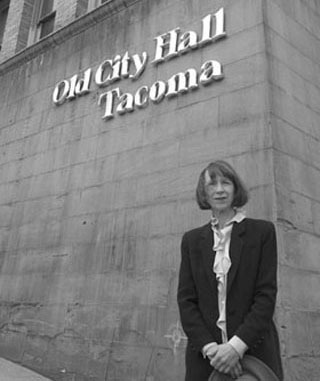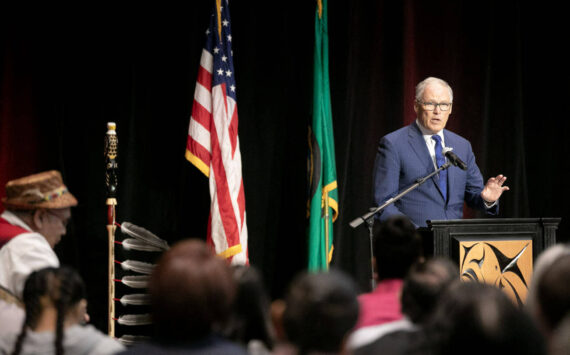EDITOR’S NOTE: Historic Tacoma announced Friday that its Board of Directors recently revised the organization’s public policy agenda. According to Board President Sharon Winters, the non-profit organization dedicated to preserving Tacoma’s architectural legacy through education and advocacy will focus on six public policy issues beginning this year and through 2010: Comprehensive Inventory of Historic Resources; Demolition Review Ordinance; Transfer of Development Rights; Revision to Pierce County’s Public Benefit Rating System; Deconstruction as an Alternative to Demolition; and Improved Management of Publicly-Owned Surplus Properties. In a statement released Jan. 2, Winters outlined each of the public policy items. The information is re-printed in today’s edition of the Index.
– – – – – – – – – – – – – – –
1. Comprehensive Inventory of Historic Resources
Historic Tacoma believes that the city should treat its historic architecture as assets. In order to take a proactive approach to preservation, architecturally and culturally significant structures across the city must first be identified. With a comprehensive up-to-date inventory, policy makers, staff, developers and citizens will be better able to recognize and preserve the city’s unique architectural heritage.
The city has maintained an historic resource inventory for many years and has recently allocated funds to update inventories of several Tacoma neighborhoods. About half of neighborhood surveys remain to be updated from their 1979-81 versions. Historic Tacoma will play a prominent role in conducting thematic inventories of the City’s historic schools, sacred places, and Hilltop neighborhood in 2009.
It appears that update and expansion of the city’s historic resource inventory will be accomplished as part of the planned 2009-10 citywide preservation plan, recently funded by Council.
2. Demolition Review Ordinance
Teardowns of architecturally and culturally significant structures diminish the character and livability of the city and its neighborhoods, detracting from one of Tacoma’s strategic assets as a historic regional center. Teardowns also affect the community’s economic and social diversity and neighborhood stability. Historic Tacoma’s analysis of 2004-06 demolition permits highlights the loss of significant classical and vernacular architecture throughout the city.
Adoption of a demolition review ordinance has been recommended to City Council by Historic Tacoma, requiring review of demolition permits for structures 50 years or older to assess the historic significance of the structure and impact of demolition on neighborhood character. In the recently-approved biennial budget, the City has funded development of a comprehensive Preservation Plan; demolition review will be included.
3. Transfer of Development Rights
Transfer of Development Rights (TDR) is a market-based mechanism which supports the voluntary transfer of development rights from areas where a community wants to discourage development to places where it is desirable to focus new growth. Through individual transactions, development rights are transferred from farms, forest, natural areas and historic sites (sending sites) to areas that can accommodate additional growth and density (receiving sites). Landowners in sending areas receive compensation for giving up their right to develop, while developers in receiving areas pay for the right to develop at greater densities or heights than would otherwise be allowed. When development rights are removed from a sending site, a conservation easement is placed on it, allowing for permanent protection of the parcel.
TDR would encourage the preservation of historic structures while enabling increased density in other parts of the city. TDR does not limit growth; it allows communities to plan more effectively by directing growth into areas most appropriate for it.
The state’s Department of Community, Trade and Economic Development (CTED) is developing a regional TDR program in central Puget Sound. Pierce County enacted a program last year, but it is not yet staffed. A Tacoma TDR program, to encourage increased density in Mixed Use Centers, has been discussed as part of Comprehensive Plan revisions. Historic Tacoma hopes to work with the Cascade Land Conservancy and the City to establish a Tacoma TDR program.
4. Revision to Pierce County’s Public Benefit Rating System
Current policy in Pierce County is to assess land based on market value for the highest and best use. In other words, a property containing a single family residential structure in an area zoned for higher density may be taxed at the same square footage rate as an adjacent high-rise apartment building. This creates a situation in which the taxation rate may assume a much higher property income than is actually present; this situation may have the effect of enabling demolition of historic properties.
RCW 84.34 allows county governments to assess property at a rate reduced from “highest and best use” for the purposes of conservation of open space lands, environmentally sensitive areas, agricultural and rural landscapes, and historic landmarks. In Pierce County’s program, historic landmarks and archaeological sites are accorded low priority status and are thus seldom eligible for property tax reductions.
Both Clark and King County award higher points to encourage preservation of historic landmarks; King County’s Open Space Current Use Assessment program allows up to 50 per cent reduction in property tax assessment for historic buildings. The Tacoma Historic Preservation Office is currently working with Pierce County officials to make a similar change to award higher points to owners of properties listed on a local Register of Historic Places, thus supporting preservation goals outlined in state and city policy.
5. Deconstruction as an Alternative to Demolition
Deconstruction is the selective dismantling of building components for re-use, recycling, and waste management. Re-using buildings and building materials promotes resource conservation and reduces landfill volume, 30-40% of which is currently made up of demolition & construction debris.
Historic Tacoma has proposed deconstruction as a demolition alternative to the Environment & Public Works Committee of City Council, and conducted a small deconstruction demonstration project during the fall of 2008 to set a model. The Committee has committed to include it in part of the city’s comprehensive strategy to address landfill issues. We hope that the city’s new Sustainability Office will take up the issue.
6. Improved Management of Publicly-Owned Surplus Properties
The City of Tacoma, Tacoma School District, Tacoma Power and other public agencies own a number of surplus historic structures, including sites such as the Hilltop’s Browne Star Grill. These buildings are architecturally significant and serve as visible anchors in their neighborhoods. As properties are marketed, public agencies should encourage rehabilitation and adaptive re-use of these sites.
Tacoma has adopted comprehensive plan policies that provide guidance for the preservation of publicly owned facilities. Historic Tacoma recommends that public agencies follow Tacoma’s adopted policy language, provide appropriate stewardship for these surplus structures, and proactively encourage adaptive reuse through progressive surplus procedures. Rather than allowing buildings to lie vacant and deteriorate, as was the case with the Municipal Dock, properties should be sold using bid processes which include requirements and/or incentives to rehabilitate and re-use historic structures. Conditional use zoning for historic properties, proposed in the Mixed Use Center Proposal (which is still under review) would encourage rehabilitation and adaptive re-use of more historic structures.
For more information, visit http://www.historictacoma.net .





